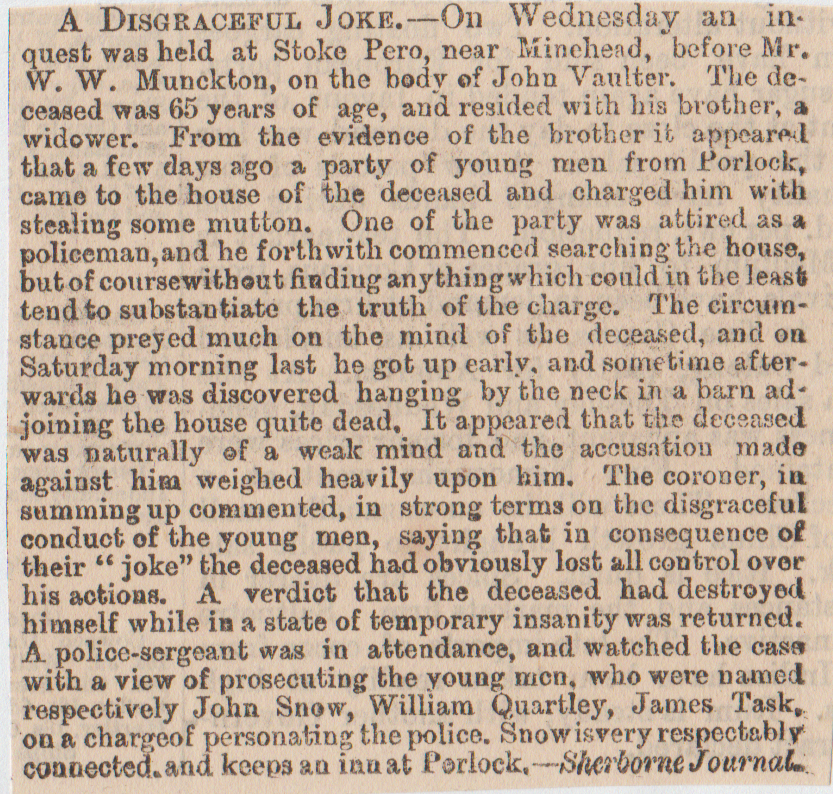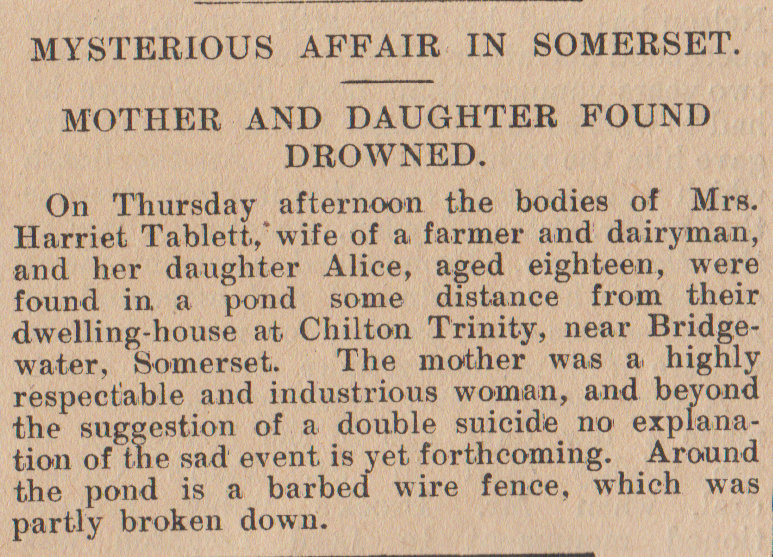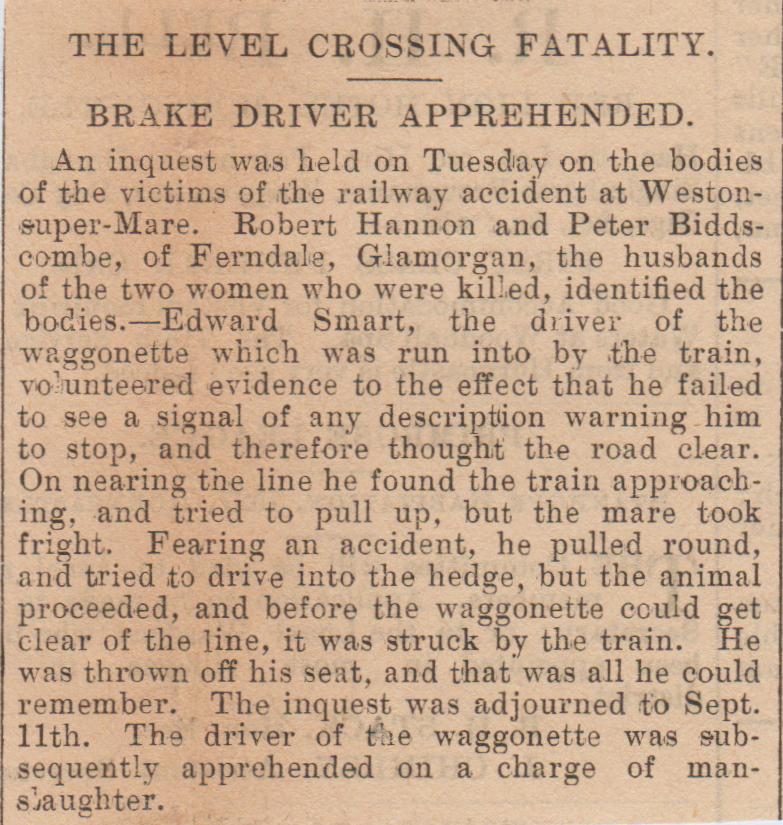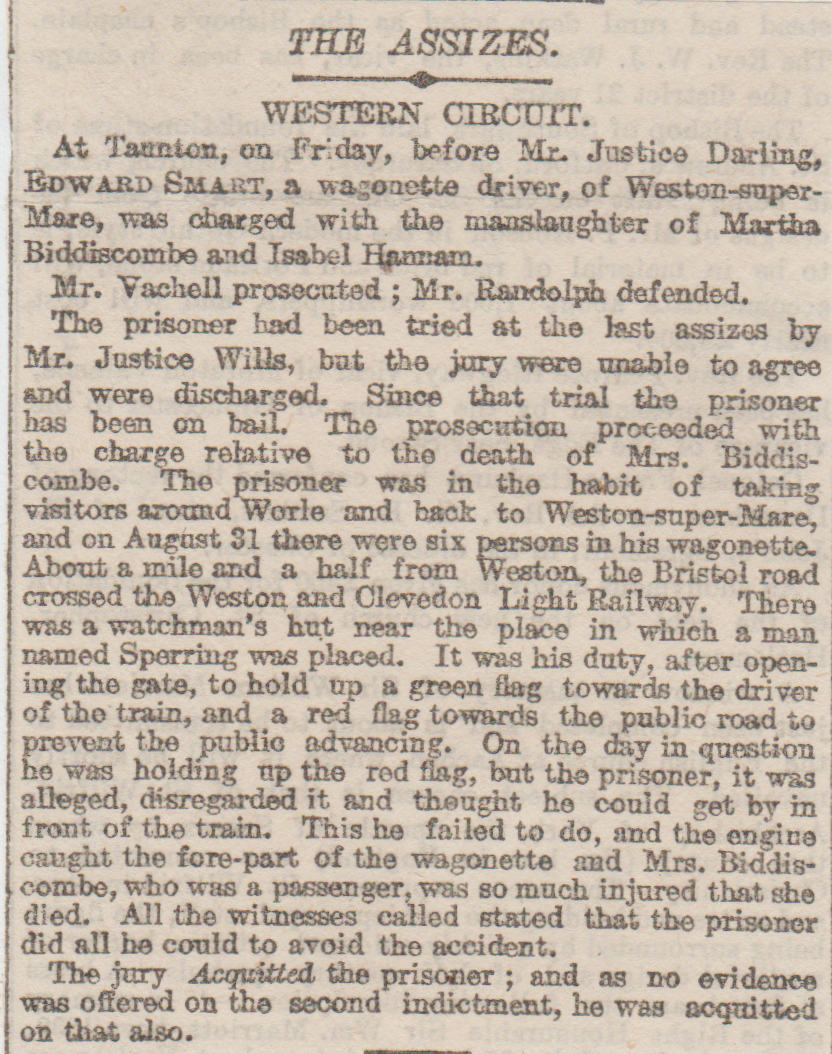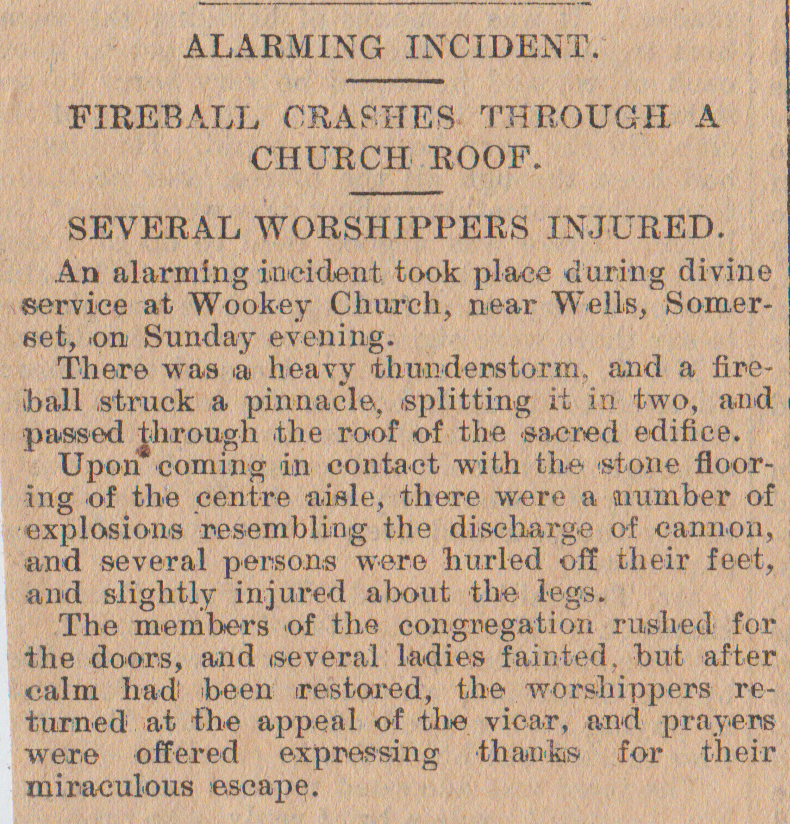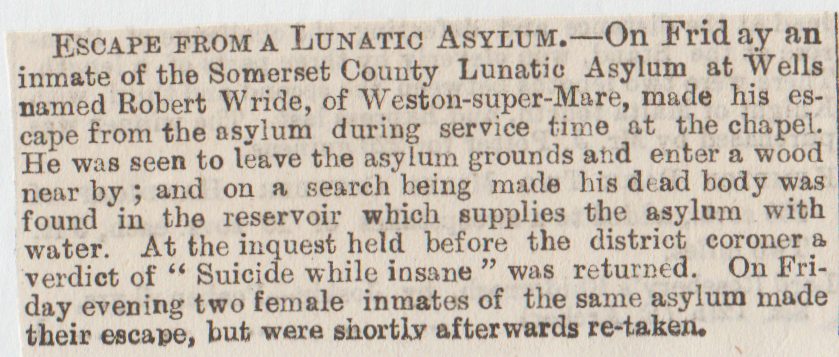1/ Weston-super-Mare Pier Suicide, August 1881
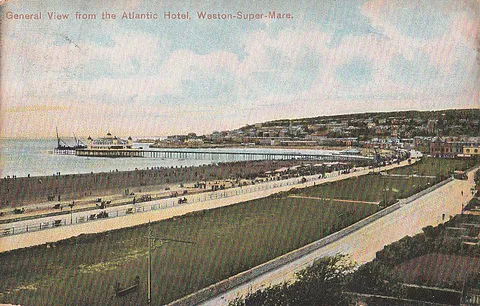
The wife of Mr.Richard Nash of Oakhouse Martley, Worcester, committed suicide by leaping off the pier at Weston-Super-Mare. She went for a walk with a friend and while her friend was paying to get on the pier, Mrs Nash waltzed over to the railings, climbed over and into the water. The body was recovered later on that day.
2/ Kelston Bathing Fatality, August 1890

3/ Huntspill Suicide Pact, near Highbridge, August 1868 (Lesbians or Good-time Girls?)
Can’t quite work this one out. Either they are lesbian lovers or good-time girls or really really close friends! Elizabeth Cridge, nearly sixteen, and Jane Meaker aged nineteen, both stayed out one night. Their beds were unslept in and they were nowhere to be seen, so a party went to look for them but to no avail. Eventually, their bodies were discovered in a cattle-pond on their employer’s grounds. Rather romantically they were clutched in each others arm’s, both were obviously stone cold. Rumours abound that immorality of conduct and these had reached the vicar, Reverend Arundell. Vicar told their boss, Mr Hawkins, and he swiftly had a word with them about the gossip. Hawkins told them if the rumours were true, they’d be out on their ears on Monday. Sunday night they made some kind of suicide pact and both dived into the small, but a fairly deep pond. The question remained, were they sane when they did it? The verdict was “Felo de Se”. The girls were buried within the day, between nine and twelve at night, and with no Christian rites performed, as was usual for suicides. Huntspill is in a sombre mood at the moment.
4/ Hallatrow Church Suicide, Somerset July 1861
Just to clear one thing up first, is that Hallatrow has no church, but High Littleton has, so this could be the one. The sextoness of the church, Mrs Collins, sent two young lasses in to help her tidy the place up before the Sunday service began. They went about their business and while doing so their fifteen-year-old brother crept in and went up to the belfry. After ten or fifteen minutes one sister found him swinging by a rope. The rope used was also used to ring the bells. He had been so determined that while the rope was far too long, he threw his legs out from underneath him, or else his feet would have touched the floor and he ended up in a sort of kneeling posture.
5/ Near Brent Knoll Station, (Railway Death) February 1900
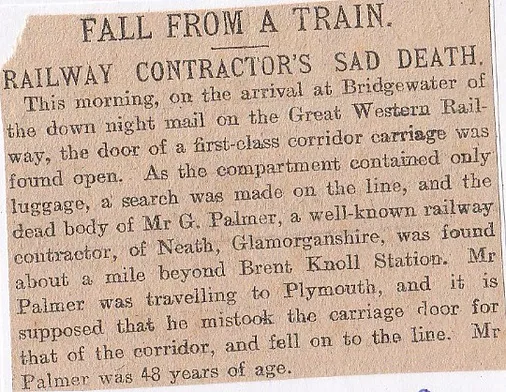
6/ Bath, October 1836
Uriah Hales, a labourer, fell into a lime-kiln in the Lower Bristol Road, Bath. He was extricated from the kiln, but both his legs were literally burned off.
7/ Frome Suicide, September 1843
A tragic event took place about a mile from Frome, Somerset. Thomas Moon was walking with a relative of his to Vallis Vale, then when he got to the top of the rocks and he threw himself off. The height of the rock was about one hundred and fifty feet and not surprisingly he was killed as soon as he hit the ground.
8/ Twerton, Bath June 1860 (Fatal Accident)
A dreadful accident took place at Twerton, resulting in the death of a little girl. The children’s name is Grissel and their parents live in the lane adjoining the Royal Oak Inn. The kids were playing near the road one day when they ran alongside a waggon, which had a load of timber in it. One of the pieces of timber weighed a couple of tons plus and for some inexplicable reason she managed to fall under the wheel, straight over her head. The girl died straight away and her brains protruded from the head of her lifeless body. Her brother had tried to rescue her and had his foot crushed under the wheel.
9/ Weston-Super-Mare, (Sad Affair) October 1885
Mrs Emily Kirkbride had employed Emily Mary Nicholas as a domestic servant at Woodhill, Manor Road, Ashcombe. She had been there for over four years but Mrs Kirkbride suspected her of being pregnant. She had a word with her and she told her that she was correct in her assumption. Kirkbride then told her mother that she would have to go back home. Nicholas was gutted by the news but was told she could stay another day. Mrs Kirkbride left her alone the following day at around three o’clock and when she came back at seven o’clock, she saw that the house was locked and unlit. Kirkbride thought she had gone to meet her at the station so hung on for half an hour outside, but then she heard groans. The mistress immediately got help and the door was forced open. A message was sent to get her mother or father and in a bit of great timing, as soon as they opened the door to her bedroom her father arrived to comfort her. Nicholas had taken some poison and the doctor managed to save her, and then a couple of days later she went home. The day after going home, she gave birth to a child but it was stillborn, then a few hours later Emily Nicholas died. She left behind a sad letter, which read:
“I hope the Almighty will forgive me for what I am going to do and take me home to glory to be with Him. I don’t want to live to be a trouble to anyone; so goodbye, my dear mother and father, brothers and sister, and my dear mistress; I do hope to see you all again one day. Friends, you all know about it; it will drive me mad. I hope that nasty wretch will live to suffer for it, and made to pay all the expense. So goodbye.” Who this mysterious person that she wrote about is, nobody knew.
10/ Oake near Milverton, December 1900 (Four Poisoned to Death)
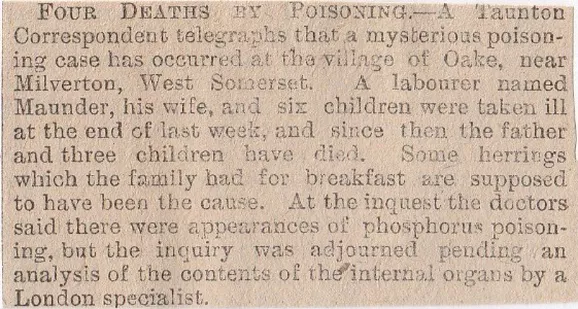
11/ Dowlish Wake February 1881 (Vicars Suicide)
The vicar of Dowlish Wake, Rev.Benjamin Speke, killed himself by drowning. His wife had died the previous day, and a few years ago the clergyman went missing. His clothes were found in London, then several weeks later he turned up in Cornwall and had managed to get a job as a cattle drover. He was eccentric, to say the least!
12/ Hampton Rocks Skeleton, Bath September 1893
Two boys, while exploring a cave, have made a horrific discovery. While in the cave at Hampton Rocks, Bath, they came across the remains of a 20/30-year-old woman, which was covered over with flat stones, and was badly decomposed. It was bordering on being a skeleton and had been there a considerable amount of time and could only be determined as being that of a woman due to the clothing and hair remnants. The boys got in contact with police, but eventually, County Police took over the investigation. (Ever find out who it was?)
13/ Nailsea Dynamite Suicide, October 1893
John Roberts was a miner and he lived at Nailsea with his missus, and they had had a rocky relationship, to say the least and was taken to court for assaulting her. Being a miner, he sneaked out a couple of sticks of dynamite from his workplace, then popped a stick in his gob and lit it while his wife was there and waited for the thirty-second fuse to end. He walked into the yard, then a loud explosion was heard (and people living a mile away said they heard it) and his head was blown to atoms.
14/ Yeovilton near Yeovil, February 1895 (Fatal Boiler Explosion)
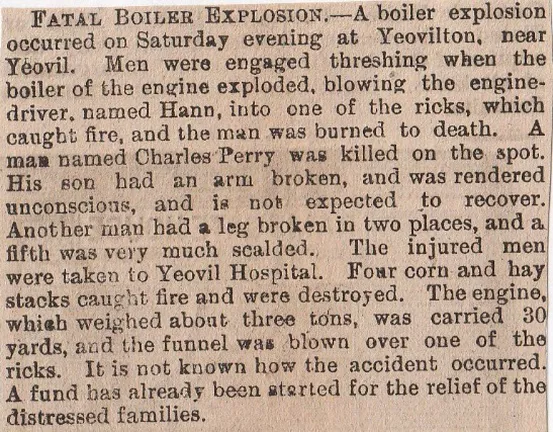
15/ Keynsham, March 1857 (Fatal Accident)
A fatal accident occurred at the Hillsbridge Iron Works near Keynsham. A man by the rather Dickensian name of Holiday Bush, who was a roller operator at the works, was reaching for a spanner when a piece of his clothing got caught in the machinery, it then dragged him headfirst against the drums and he killed instantly.
16/ Portbury Suicide, May 1830
A young lad only sixteen years of age, drowned himself at Portbury because his mistress told him off for acting improperly while her husband was away. The lad tied a huge stone around his neck by means of his braces and dived into the water. Because he was deemed to have committed suicide, his body was interred at midnight and with no religious rites.
17/ River Avon near Bath, March 1904 (Weird Suicide Letters)
An inquest was held on the body of a gentleman’s attendant named C.F.Davis of Clevedon, whose corpse was fished out of the Avon. He left a suicide note and his hat on the bank, plus a second note to the Coroner, it went:-
“I did this act being fully aware of the awful eternity that awaits me in consequence, but it is only the fit end to a life of misery. God help my soul. Tuesday, February 23rd; 9-30 p.m. Postponed until tomorrow about six o’clock.
The following letter to a friend read:-
“I send you herewith a pair of gold links, the last possession I have to part with. Try, all friends in Clevedon, to think kindly of me and forgive the rash act I shall tonight undertake…..Tell all those to whom it may concern to recover my body as soon as possible. I dread rats and eels. The only step left for me to take; What else can I do? I have done my best since I left Clevedon to battle against this. The more I think the worse I am, and the more urgent it is for me to clear as soon as possible. God forbid that it was ever my intention to “do” anyone, but circumstances alter cases. Mine has been a cursed life.”
His uncle killed himself twenty years ago and his mother died in an asylum about a month since and there was a warrant for his arrest. Verdict “Suicide whilst temporarily insane”
18/ Barwick House Fatality, Yeovil, December 1885

19/ Puxton Station near Weston-Super-Mare, September 1904
The express train had just gone through Puxton Station near Weston-Super-Mare when a plate-layer noticed something lying on the tracks. On closer inspection, it proved to be the decapitated body of a young woman. The remains were identified as those of Katherine Woodford aged twenty-four, the daughter of the rector of Locking. She had been cycling around the area and the bike was discovered quite a distance away in a field.
20/ Weston-Super-Mare Suicide, August 1884
A member of the Volunteer Engineer Corps, a man named Twitt, blew his brains out in his bedroom at Weston-Super-Mare. His invalid wife was lying in bed at the time and his wife was greatly distressed by his suicide and is not expected to recover from the shock.
21/ Grosvenor Suspension Bridge Suicide, Bath, February 1918
An aeroplane worker, Mabel Holland aged sixteen, jumped off the Grosvenor Suspension Bridge in Bath. She was suspected of dishonesty but this was unjustified and the girl from Bath decided to end it all. She left a note saying why she did it.
“I am nearly driven out of my mind with their taunts. The girls who work with me have driven me to this.”
22/ Gurney Slade Fatal Explosion, January 1832
Mr George Gait a grocer in the village of Gurney Slade, went to his relations with his wife. The rest of the family, eight in all, were going to chapel, with one the daughters was making up a fire and who threw the contents of a box on the fire. She thought it was the coal box but it contained several pounds of gunpowder and the house was blown to smithereens. Two of the children were killed outright and three are in a critical condition.
23/ Yeovil Frozen Body, January 1885

24/ Weston near Bath, July 1900 (Mob Justice)
A mob numbering about 200-300 people in the village of Weston near Bath, made an attack upon a poor woman of that place. Her husband had died and she had been convicted of a certain offence shortly after. The unruly crowd grabbed hold of her, then set fire to her home and dragged her through the streets attached to a rope. The vicar of the parish, Reverend Hayas Robinson, intervened, just as they were about to “duck” her and he cut the rope and freed the woman. One man got three months in prison and two others got a couple of weeks each in the clink. Some others got a fine of £2 each. (What the hell had this poor woman done to warrant such treatment?)
25/ Glastonbury Church Suicide, February 1840
The suicide of a Mr Bullhead has taken place in Glastonbury. He was heavily in debt and owed £1700 to a local firm and was thought to have invested in the Glastonbury Canal, which also appeared to be leaking money. The solution was a simple one. Mr Bullhead borrowed the keys to the church tower, telling the sexton that he wanted to survey some land in the area to see if it had flooded in the recent heavy rainstorms. He made it to the top of the tower then threw himself off. (Was it St Benedicts? St John the Baptist?)
26/ Lansdown Grove Hotel Suicide, Bath, September 1889
A man’s body was discovered near the Lansdown Grove Hotel in Bath. He was found under an elm tree and was identified as an inmate of the Bailbrook Asylum and was named Julian Fowler, the son of the vicar of Walton near Clevedon. He had shot himself in the head, with the weapon lying by his side. A few days previously Fowler’s father was allowed to take his son home and this he did, via a little break in Wales. The father sent a postcard to the man in charge of the asylum, Dr Wetherley, saying they’d be back that day. Fowler and his Dad arrived in Bath from Chepstow and he was left to make the three-mile trip back to Bailbrook alone. This was the opportunity he needed and then committed suicide near the hotel.
27/ The Road Murder, July 1885
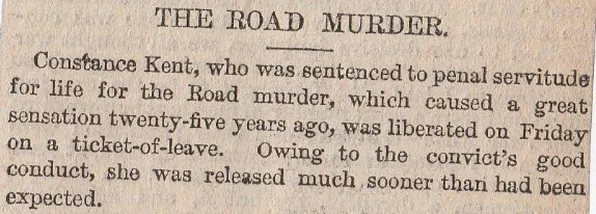
28/ Bath Murder/Suicide, February 1850
Edmund Hunt took his own life and that of his infant child at Bath. The wife and mother of the child was a habitual shop-lifter and when he got home one evening and discovered that she had been arrested for it again, he took the child and went down to the River Avon and plummeted into the water. He was deeply attached to the child and was only thirty-seven years old.
29/ Banwell Drowning, Weston-Super-Mare, January 1884
At Banwell, a couple of young men named Phillips and Richards, had a street-brawl. Phillips was dragged away by his mates and Richards was ushered by the crowd to a mill pond where he was chucked in. There was a tiny island in the centre of the pond, where he stayed until he said, they got a boat. He instead made a swim for it, got snagged in the weeds and promptly drowned.
30/ Taunton Suicide, October 1868
About seven miles from Taunton at Blackdown Hills, a man’s body was found with his throat slit. In a ditch about a mile from the Holman Clavell Inn, in Pitminster, the decomposed remains were found and nearby was a razor and a knife, both encrusted with blood. The man’s name was Henry Mitchell from Crediton and was a former member of the 16th Rifles, and it was estimated that it had lain there at least a week.
31/ Southstoke Brewery Fatality, Bath, March 1887
Thirty-six-year-old Charles Witchell, of No.2, Crossway Cottages, Combe Down, and living with his brother and sister, went missing from his home. He had worked for the Southstoke Brewery in Bath for twenty years. Inquiries were made as to his whereabouts and it was ascertained that he hadn’t been to work at the brewery, they thought he had pulled a sicky and stayed at home. When the hours turned into days, the family grew worried and a search was made for him. His body ended up being in a disused vat at the brewery. He was found by chance when a worker was going up to the roof of the building and he spotted Witchell’s hat next to the vat. The vat was empty but contained enough gas to kill a man. It cannot be worked out if it is a tragic accident or suicide.
32/ Taunton County Gaol Suicide, February 1850
The County Gaol at Taunton saw the saw suicide of a teenage prisoner. The sixteen year old named W.Hounsell was in prison for absconding from the Chard Union. He was clearly disturbed by his stay at Her Majesty’s pleasure, so much so that he threw himself under the wheel of a treadmill that had eighteen men working it. They tried to stop in time, but the lad was badly mangled and when they got him out he was already dead.
33/ Bath Murder, June 1889

34/ Monkton Combe Mill Suicide, September 1864
Thomas Watts a miller left his home and went to the mill at Monkton Combe. During the morning someone wanted a word with him about some business matters, but they couldn’t find him, so they looked around. He was found in the flour mill hanging from a beam. In the loft part where he was found, the floor sinks seven feet down so the grain can run into the mill. He stood on the edge of the dip and tied a rope around a beam and then popped it around his neck and leapt off.
35/ Worle Self-Immolation, August 1863 (It’s like an episode of Wallander)
The wife of William Wallace a farmer living in Worle, committed suicide in a most distressing manner. One morning Mr Wallace left the farm to look over the fields and livestock and he left the wife and two kids at home. Just after he left she dressed herself in a gown, she walked downstairs, then got a light and set herself on fire. While alight she walked into the garden and died from the dreadful burns she sustained. She was described as being of “weak intellect” and had some weird delusions on account of her husband moving to a larger and better farm. Friends told of how she used to say how she didn’t want to leave the farm and they would have to carry her out in a coffin.
36/ Fear and Coward Saw-mill, Bath, May 1834 (Tragic Accident)
Twenty-seven-year-old Henry Abrahams was supervising the circular saws at Messrs Fear and Coward, of Bath. It was rotating at 3600 feet a minute when he came into contact with it. Firstly it took an arm off, then divided the side and lacerated the entrails, laying them open to view. He was taken to United Hospital but it was hopeless and he died the following day.
37/ Selwood Club, Frome, July 1889
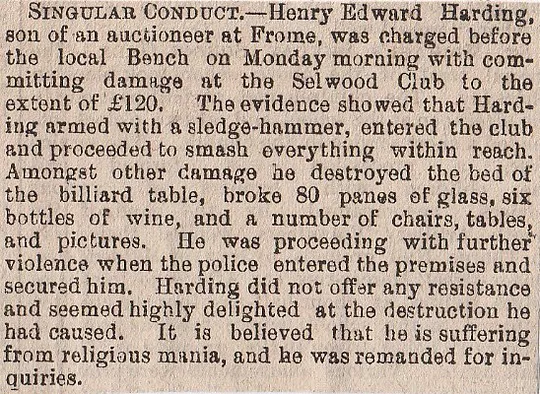
38/ Clevedon, July 1899 (Woman found on Rocks)
William Hancock a boatman, was rowing his boat near Salthouse Mill when he spotted the body on the rocks. He went to Clevedon and told Sergeant Fairchild. They recovered her and the only clue to her identity was the “H.W.” she had on her clothing. She was about thirty, blue coat and skirt, blue cap, black silk waistband and kid lace boots. It appears that the woman had fallen onto the rocks from a cliff nearby, about thirty feet high and had been bashed about by the waves and rocks. (Who was she ?)
39/ Bath Brothel Suicide, June 1860
If you’re going to kill yourself then there can worse places than a vat of ale, which we have read about, or indeed in a brothel. This is Thomas Bull, a farmer from Basingstoke, who hung himself at 8, Monmouth Street, Bath, renowned as being a knocking-shop. He went to Bath for the purpose of attending the races at Lansdown and then he met a prostitute by the name of Jeffries. He went to the above address and stayed there for a number of days. The madam of the brothel told him to go home as he was getting depressed. He said he would and decided on having a kip before he went back and he asked her to wake him at three o’clock. The door was shut tight when she went to get him up, so she got a copper to help open the door, along with a carpenter. They found Bull hanging from the bed-post by a piece of cord. The body was freezing cold and the hands were black, which means he’d been dead quite a while. He only had a shirt on and had no money or papers with him to prove who he said he was.
40/ Frome, August 1847 (Twilight Zone-Dream Fulfilment)
A fatal accident occurred near Frome, which it appears, was seen in a woman’s dream. The wife of a man named Gibbs, who was a carter, dreamed that a waggon had run over her husband, while he was at work and killed him. She was utterly convinced by it but he passed it off. He had to go to Bath one day and the wife asked him to take their daughter with him. Everything went OK until they were heading back at seven that evening and got as far as Ammerdown, the horses became frenzied and Gibbs tried to jump out and stop them. Suddenly the dream came true in all aspects. He was run over by them and lived for a few hours, but during the accident, the daughter tried to help and was herself run over and killed as well.
41/ Somerset County Gaol, Taunton, January 1857 (Tragic Accident)
Another tale of woe from the County Gaol is just above this one. George Kingdon was a prisoner at the County Gaol in Taunton. He was with six others doing some drainage work and above them were some more men on scaffolding. An iron bar fell off and tried to jump out of the way, instead, it landed smack on his head. He was breathing but unconscious and only lasted a few minutes before passing away. A post-mortem revealed that bone splinters from the skull had penetrated his brain. The bar fell nearly fifty feet and if he’d have stayed where he was, the bar would have missed him.
42/ Knowle Murder, March 1879
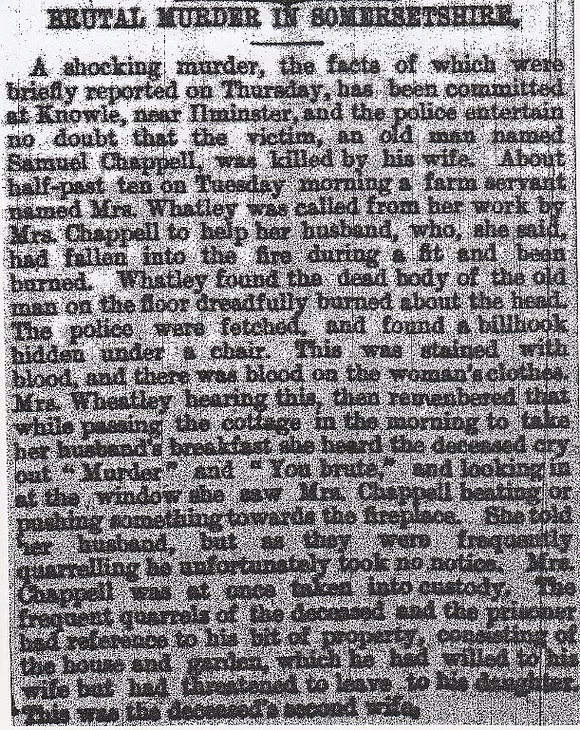
43/ Near Watchet, Somerset, June 1859 (Sorry, some of it missing!)
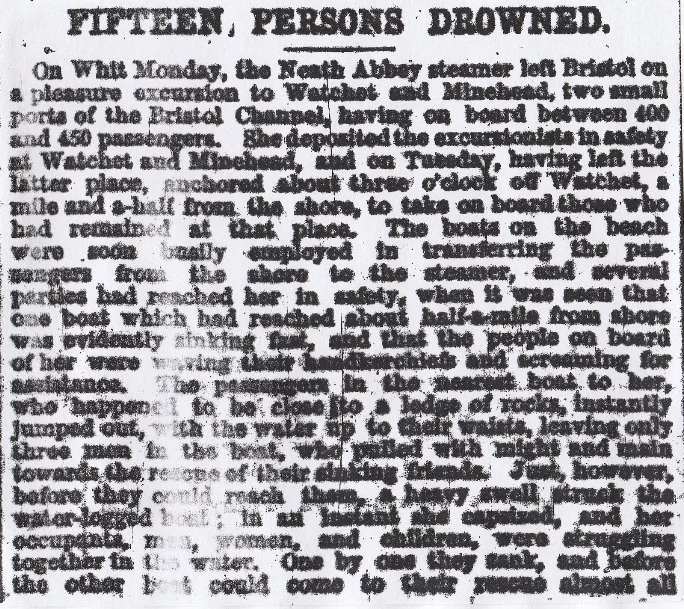
45/ Nore Point, Portishead, December 1900 (Steamer Wrecked-Seven Dead)
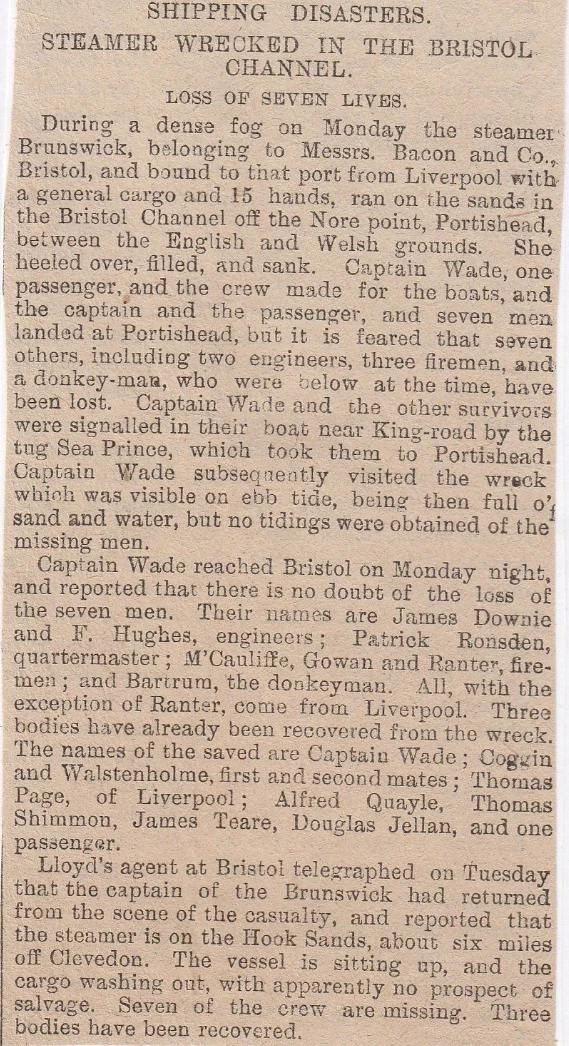
46/ Saltford Drowning, Somerset. September 1906
While swimming in the Avon at Saltford on Saturday, Douglas Snell Chamberlain aged nineteen, whose parents live in London, suddenly sank, dragging another swimmer, his cousin named Heal, with him. Several persons went to their assistance and Heal was rescued in an exhausted state, but Chamberlain was drowned.
47/ Bath Murder/Suicide September 6th 1870
Mr H.C. Hopkins, writing in the British Medical Journal concerning the sad case of Miss Prankard, who is now in the Bath United Hospital, says that she has been wounded by two bullets, one entering the face on either side in front of the ear. Both are now lodged in the bones of the upper part of the mouth or of the nostril. Up to the present time, she progressed favourably, but no attempt has yet been made to remove the bullets.
September 19th, 1870
Miss Kate Prankard, one of the victims of the late murderous assault by which her sister was killed by her father and she herself shot in the head, has sufficiently recovered to be able to leave hospital and take up abode with her friends. It will be remembered that two bullets were lodged in her head, above the palate, behind the nose, but the surgeon’s decided no operation was necessary, hoping they would work their way out. They were correct, as on Wednesday a bullet dislodged itself from the place in which it had been embedded and fell into the young lady’s mouth.
August 24th, 1870 (Murder/Suicide at Bath)
48/ Practical Joke leads to Suicide, Stoke Pero near Porlock. February 1866
49/ Mother/Daughter Found Drowned, near Bridgewater. March 1902.
50/ Level Crossing Fatality, Weston-super-Mare. September 5th, 1903.
October 1st, 1903 (The Inquest)
The inquest on the persons killed in the recent accident at Worle, through a railway engine coming into collision with a wagonette at a level crossing, was concluded yesterday afternoon. The evidence showed that immediately before the accident Smart, the driver, of the wagonette, said he thought he could get over the crossing before the train passed and that he subsequently said he supposed it would mean twelve months for him. The jury returned a verdict of “Manslaughter” against Smart and expressed the opinion that the crossing was not properly protected by a signal aged seventy. Smart was committed for trial but admitted to bail in substantial sureties. (Martha Biddiscombe and Isabel Hannon, both of Ferndale, were killed in the collision at Worle)


